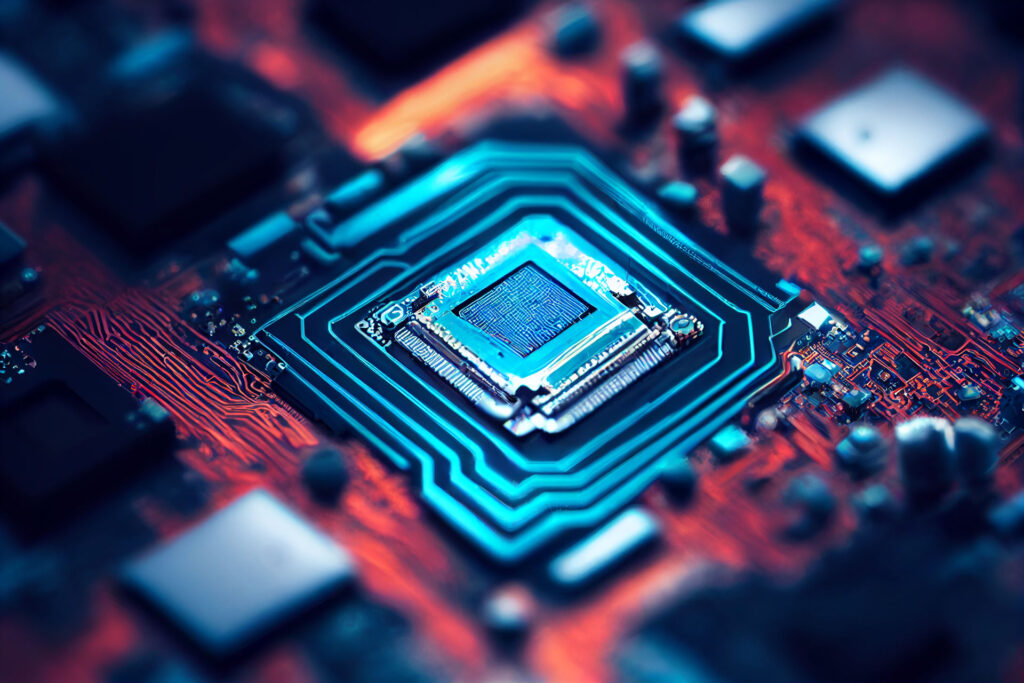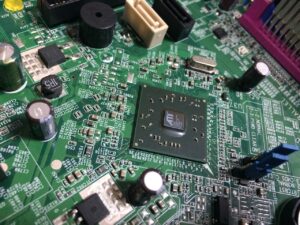Semiconductor Chips: Powering the Digital Age – In today’s digital era, semiconductor chips stand as the unsung heroes behind the seamless functioning of our electronic devices. From smartphones and laptops to sophisticated machinery and infrastructure, semiconductor chips play a pivotal role in powering the technologies that drive modern life. This article explores the intricacies of semiconductor chips, from their humble beginnings to their omnipresent presence in our daily lives.
Introduction to Semiconductor Chips

At their core, semiconductor chips are miniature electronic circuits etched onto a small piece of semiconductor material. These chips serve as the fundamental building blocks of virtually all electronic devices, enabling the processing, storage, and transmission of data with remarkable speed and efficiency. Without semiconductor chips, the sophisticated gadgets and systems we rely on today would cease to function.
History of Semiconductor Chips
The history of semiconductor chips traces back to the mid-20th century, with the invention of the transistor by scientists at Bell Labs in 1947. This groundbreaking discovery paved the way for the development of integrated circuits, which revolutionized the field of electronics. Over the decades, relentless innovation and advancements in semiconductor technology have led to the creation of increasingly powerful and compact chips, fueling the rapid progress of the digital age.
How Semiconductor Chips Work
Semiconductor chips operate on the principles of semiconductor physics, harnessing the unique properties of materials like silicon to control the flow of electric current. These chips consist of multiple layers of semiconductor material, each doped with specific impurities to modify its electrical properties. Through the precise arrangement of these layers and the incorporation of various components such as transistors and diodes, semiconductor chips perform complex computations and execute instructions with remarkable precision.
Types of Semiconductor Chips
Semiconductor chips come in a variety of types, each tailored to suit specific applications and requirements. Common classifications include microprocessors, memory chips, and application-specific integrated circuits (ASICs). Additionally, semiconductor chips can be categorized based on their material composition, with silicon-based chips being the most prevalent due to their abundance and favorable electrical properties.
Semiconductor Chip Manufacturing Process
The manufacturing process of semiconductor chips is a highly intricate and precise endeavor, involving numerous steps carried out in state-of-the-art cleanroom facilities. Key processes include photolithography, where patterns are etched onto silicon wafers using light-sensitive materials, and doping, which introduces impurities into the semiconductor material to alter its conductivity. These steps are repeated multiple times to create intricate circuitry on the surface of the chip, culminating in the production of fully functional semiconductor devices.
Applications of Semiconductor Chips
The versatility of semiconductor chips enables their widespread use across a myriad of industries and applications. From consumer electronics and telecommunications to automotive and aerospace, semiconductor chips form the backbone of countless products and systems. Smartphones, computers, medical devices, and even household appliances rely on semiconductor chips to deliver performance, efficiency, and functionality to end-users.
Challenges and Future of Semiconductor Chips
Despite their pervasive presence and technological prowess, semiconductor chips face several challenges as they continue to evolve. Issues such as miniaturization, power consumption, and thermal management present ongoing hurdles for chip designers and manufacturers. However, ongoing research and development efforts, coupled with emerging technologies like quantum computing and nanoelectronics, hold promise for overcoming these challenges and ushering in a new era of semiconductor innovation.
Conclusion
In conclusion, semiconductor chips represent the cornerstone of modern technology, underpinning the digital infrastructure that defines our interconnected world. From their humble beginnings to their current ubiquity, semiconductor chips have continually pushed the boundaries of what is possible in the realm of electronics. As we look to the future, the role of semiconductor chips will only continue to expand, driving innovation, progress, and connectivity on a global scale.
Unique FAQs
- What makes semiconductor chips different from other electronic components?
- Semiconductor chips leverage the unique properties of semiconductor materials to control the flow of electric current, enabling complex computations and data processing.
- Are all semiconductor chips made of silicon?
- While silicon is the most commonly used material for semiconductor chips, other materials such as gallium arsenide and germanium are also used in specialized applications.
- How do semiconductor chips contribute to energy efficiency?
- Semiconductor chips are designed to perform tasks with minimal power consumption, making them essential components in energy-efficient devices and systems.
- What role do semiconductor chips play in artificial intelligence (AI) and machine learning (ML) applications?
- Semiconductor chips are instrumental in accelerating AI and ML algorithms, enabling faster processing and analysis of large datasets for applications ranging from image recognition to natural language processing.
- What are some emerging trends in semiconductor chip technology?
- Emerging trends in semiconductor chip technology include the development of 3D integrated circuits, neuromorphic computing, and the integration of sensors and actuators directly onto the chip, enabling new functionalities and applications.



